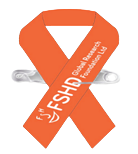GRANT 41
Research Institution: The Hebrew University of Jerusalem
Principle Investigator: Assistant Professor Nir Kalisman
Type: International
Project title: “Characterisation of DUX 4 protein – protein interactions in FSHD cell lines and tissue biopsies by cross-linking and mass-spectrometry”
Status: Active
Summary
DUX4 is the main protein implicated in FSHD, but relatively little is known about its interactions with other proteins. We must learn more of these interactions for rational design of future FSHD therapies that aim to disrupt them. We propose to use a powerful experimental technique – cross-linking and mass-spectrometry – to chart these interactions in unprecedented detail. The great sensitivity of this approach will allow to verify our findings directly in human muscle tissues.

PROGRESS REPORTS
Update September 2019
Grant 41: Characterisation of DUX4 protein-protein interactions in FSHD cell lines and tissue biopsies by cross-linking and mass spectrometry
We established in the last milestone (Feb. 2019) that C1QBP is a direct and major interactor of DUX4 in genetically-modified human cells that overexpress DUX4. Our next aim is to validate this interaction in non-modified myoblasts. Towards this aim, we made several advances in the last months. The Kalisman lab was successful in performing in-situ cross-linking with formaldehyde in human cells, and identified hundreds of resulting cross-links with mass spectrometry. This achievement (manuscript in preparation) was made possible by revising a decades-long misconception about the chemical reaction that is involved. The importance to FSHD research is because formaldehyde readily enters the cells and could cross-link DUX4 despite its very acidic sequence. It is therefore the reagent of choice for cross-linking coupled to mass spectrometry for the next stage of non-modified myoblasts.
The Coppée lab successfully showed specific binding of several antibodies against DUX4 and C1QBP in cultures of myoblasts. We will rely on these antibodies to purify DUX4 (with its interactors) from myoblast cells. For this purpose, Coppée lab received from Pr. Michael Kyba’s lab DUX4-inducible muscle cells (iLHCN), expanded them and determined the doxycycline dose to induce DUX4 in our culture conditions. They observed in parallel to DUX4 induction the increase of a 47-kDa protein that could be DUX4c as the antibody used recognized a common epitope. Determination of C1QBP and other putative DUX4/4c partners are on-going. They also identified in healthy and FSHD muscle cells that major part of C1QBP is either nuclear or associated with active mitochondria. In-situ Proximity ligation assay has been set up to determine the subcellular localization of DUX4 interaction with its partners.
In the next few months we will integrate these advances to perform in-situ cross-linking of myoblasts followed by immunoprecipitation of DUX4 complexes and mass spectrometry. We hope that these efforts will further strengthen the relevance of the DUX4-C1QBP interaction to FSHD.
Update June 2019
We established in the last milestone (Feb. 2019) that C1QBP is a direct and major interactor of DUX4 in genetically-modified human cells that overexpress DUX4. Our next aim is to validate this interaction in non-modified myoblasts. Towards this aim, we made several advances in the last months. The Kalisman lab was successful in performing in-situ cross-linking with formaldehyde in human cells, and identified hundreds of resulting cross-links with mass spectrometry. This achievement (manuscript in preparation) was made possible by revising a decades-long misconception about the chemical reaction that is involved. The importance to FSHD research is because formaldehyde readily enters the cells and could cross-link DUX4 despite its very acidic sequence. It is therefore the reagent of choice for cross-linking coupled to mass spectrometry for the next stage of non-modified myoblasts.
The Coppée lab successfully showed specific binding of several antibodies against DUX4 and C1QBP in cultures of myoblasts. We will rely on these antibodies to purify DUX4 (with its interactors) from myoblast cells. For this purpose, Coppée lab received from Pr. Michael Kyba’s lab DUX4-inducible muscle cells (iLHCN), expanded them and determined the doxycycline dose to induce DUX4 in our culture conditions. They observed in parallel to DUX4 induction the increase of a 47-kDa protein that could be DUX4c as the antibody used recognized a common epitope. Determination of C1QBP and other putative DUX4/4c partners are on-going. They also identified in healthy and FSHD muscle cells that major part of C1QBP is either nuclear or associated with active mitochondria. In-situ Proximity ligation assay has been set up to determine the subcellular localization of DUX4 interaction with its partners.
In the next few months we will integrate these advances to perform in-situ cross-linking of myoblasts followed by immunoprecipitation of DUX4 complexes and mass spectrometry. We hope that these efforts will further strengthen the relevance of the DUX4-C1QBPinteraction to FSHD.



